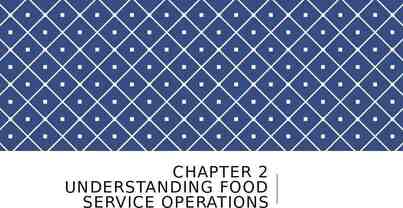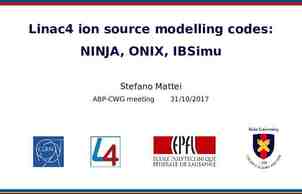Major in Electrical Engineering Neil E. Cotter Electrical and Computer
21 Slides7.36 MB

Major in Electrical Engineering Neil E. Cotter Electrical and Computer Engineering University of Utah Electrical and Computer Engineering October 2011

OVERVIEW What is EE? What do EEs do? Who do EEs collaborate with? What do EEs learn? What careers await EE graduates? Electrical and Computer Engineering October 2011

WHAT IS ELECTRICAL ENGINEERING? Electrical Engineers are inventors and innovators who apply knowledge of signals, circuits, physics, and systems to develop technologies to improve people's lives Electrical and Computer Engineering October 2011

WHAT IS ELECTRICAL ENGINEERING? Electrical Engineering: Bridging the Gap Among Disciplines in the 21st Century Electrical and Computer Engineering October 2011

WHAT DO ELECTRICAL ENGINEERS DO? Develop the technologies which allow people to communicate with each other and access information from wherever and whenever. Collaborations with: CS, Math Electrical and Computer Engineering October 2011

WHAT DO ELECTRICAL ENGINEERS DO? Develop the technologies which will enable us to generate and distribute power from renewable resources and become energy independent. Collaborations with: MechE Electrical and Computer Engineering October 2011

WHAT DO ELECTRICAL ENGINEERS DO? Develop the technologies for affordable, clean, efficient solar power generation Collaborations with: Material Science Electrical and Computer Engineering October 2011

WHAT DO ELECTRICAL ENGINEERS DO? Develop new technologies that make sensors smaller, better, and make systems more reliable and energy efficient Collaborations with: Many Electrical and Computer Engineering October 2011

WHAT DO ELECTRICAL ENGINEERS DO? Develop the technologies to improve medical care: Advances in biosensors, prosthetics, and imaging Collaborations with: Bioengineering, Medicine Electrical and Computer Engineering October 2011

EXAMPLE OF EE SYSTEM DESIGN Artificial Retina: Restore sight to the blind Image data from an external camera is wirelessly transmitted to the implant which stimulates electrodes in an array on the retina to produce formed vision. Credit: Prof. Gianluca Lazzi Electrical and Computer Engineering October 2011

EXAMPLE OF EE SYSTEM DESIGN Wireless networks that “see” through walls http://www.youtube.com/watch?v ifQkbMJ sXM Credit: Prof. Neal Patwari and Dr. Joey Wilson Electrical and Computer Engineering Changes in signal propagation between antennas in a wireless mesh network are used to estimate an image map and track people, even through walls. October 2011

WHAT DO EE STUDENTS LEARN? Tools from Mathematics and Sciences programming, calculus, linear alg., physics, chemistry or biology Tools from EE circuits & electronics, electromagnetics, signals & systems, semicond. physics, digital design Engineering Design Technical Communication Electrical and Computer Engineering October 2011

WHAT COURSES DO EE STUDENTS TAKE? Fall Semester First Year ECE 1900 CS 1410 Math 1210 Wrtg 2010 Research LEAP 1501 Spring Semester Freshman seminar Object-oriented programming Calculus I Acad. Writing & Ethical Implications of Engineering Second Year ECE 2240 Intro to Electronic Circuits Math 2250 Differential Equations & Linear Algebra Phys 2220 Physics for Sci. & Eng. II Chem 1210 General Chemistry I Chem 1215 General Chemistry Lab I ECE 1250 Intro to Electrical and Computer Engineering Design Math 1220 Calculus II Phys 2210 Physics for Sci. & Eng. I LEAP 1500 Leap Seminar for Engineers ECE 2280 Fund. Engineering Electronics Math 2210 Calculus III ECE 3700 Fundamentals of Digital & System Design ECE 2910 Sophomore Seminar American Institutions (or test) Electrical and Computer Engineering October 2011

HANDS ON: EE AT THE U Complete a hands-on interdisciplinary senior research project, many with industrial sponsors (1/2 of students get job offers from sponsor) Hands-on learning: High % of laboratory courses Electrical and Computer Engineering October 2011

Information & advising COURSE ADVISING IN EE More info: www.ece.utah.edu http://www.ece.utah.edu/bsee handbook Arlene Padilla Arenaz MEB 3313, (801) 581-4657 Office hours: Monday - Thursday 8am-12pm, 1:30-4:00pm, Friday 8am - 12pm, To make an appointment with the Electrical Engineering adviser, send an email to [email protected]. Electrical and Computer Engineering October 2011

EE CLASS OF 2011 46 of 53 graduates had job offers / grad school acceptance by graduation day Many had multiple offers Average reported starting salary: 59,000 Electrical and Computer Engineering October 2011

EMPLOYERS OF OUR GRADUATES ATK Navsea Bachtel Marine Northrop Grumman Harman Signal Proc. Raytheon Reliable Controls Rio Tinto Rocky Mtn. Power Hill AFB Knolls Atomic Power L-3 Communications Micron Moog Aircraft Electrical and Computer Engineering Sorenson Communications Varian Medical Syst. October 2011

AVERAGE EE SALARIES BY INDUSTRY Electrical and Computer Engineering October 2011

WHAT ARE EE CAREERS? Astronaut Sports Technologist Virtual Reality System Designer Music Signal Processing Expert OLPC Designer And more: CEO / CTO Patent Attorney Researcher Astronaut Educator Deep Space Telescope Imager Designer Disaster Robot From IEEE Spectrum “Dream Jobs 2011”, Feb 2011. Developer Electrical and Computer Engineering October 2011

WHY BECOME AN ELECTRICAL ENGINEER? Love work AND live life, too Be creative, solve problems Work with great people Design things that matter Never be bored Make a big salary Enjoy job flexibility CHANGE THE WORLD Electrical and Computer Engineering October 2011

SUSTAINABILITY AND ELECTRICAL ENGINEERING Power Systems Solar cells Windmills Smart grid Communications Telecommuting Internet Wireless communications Materials Nano-scale devices Quantum dots Nanotubes Electrical and Computer Engineering QuickTime and a decompressor are needed to see this picture. QuickTime and a decompressor are needed to see this picture. QuickTime and a decompressor are needed to see this picture. October 2011






